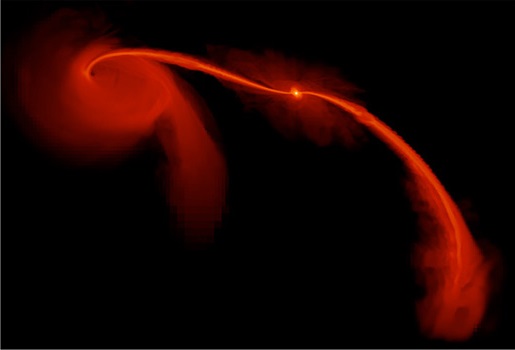
Introduction
When we look deep into the universe, we see events that involve shear amounts of energy and violence. They make the natural events on earth look in significant. Many of these events in space involve the immense gravity of a black hole.
Recently, a team of astronomers led by Vikram Ravi found such an example. They looked at past and present observations of a distant galaxy using radio waves. Ravi’s team found an object that faded over the past 30 years. This object is known as FIRST J153350.8+272729 or J1533+2727 for short.
They realized that the light was coming from a jet and an accretion disk produced by a black hole ripping apart a star.
The black hole’s host galaxy
The galaxy that Ravi’s team looked at is called SDSS J153350.89+272729. It is located in the constellation of Corona Borealis at a distance of 479 million light years from earth.
This galaxy appears to be a lenticular galaxy although it could very well be a spiral galaxy. With a bright center and the presence of certain emission lines in it’s spectrum, SDSS J153350.89+272729 also appears to be a Seyfert galaxy which means it has an active galactic nucleus (AGN). This means some material is falling into the supermassive black hole producing radiation. A well known type of AGN is a quasar.
Past research has shown that the rate of star formation in this galaxy is lower than that of the Milky Way.
J1533+2727 is located around 349 light years from the center of it’s host galaxy. It is therefore far from the galaxy’s central supermassive black hole. This information will be important when determining the nature of J1533+2727.
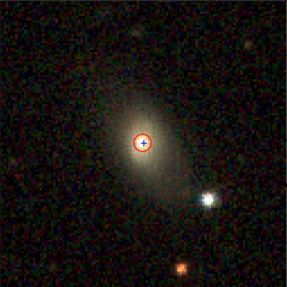
Past observations
Ravi’s team were not the first to spot J1533+2727. Multiple observations of it’s host galaxy in the past detected it when it was brighter.
J1533+2727 was first detected in 1986 using the Green Bank 300-foot telescope. At the time however, it’s significance was not recognize. It’s flux density at the time was around 55 mJy (milli-Janskys) at a light frequency of 4.85 GHz. Significantly brighter than it was at present time.
Later, in 1995, J1533+2727 was detected again. This time however, by the Very Large Array radio telescope (VLA). At the time, the VLA was performing a survey of the sky using radio waves. By then, J1533+2727’s flux density was down to 9.7 mJy and would continue to decrease.
By 2017, J1533+2727 had faded to the point where the VLA could not detect it in it’s 2017 sky survey. However in 2019, Ravi’s team looked at the host galaxy again with the VLA. This time using multiple frequencies. They managed to rediscover the object. This time, it’s flux density was down to 0.132 mJy.
Is the black hole part of an AGN?
With the information from previous observations of J1533+2727, Ravi’s team where able to deduce what it really is.
The first idea is that J1533+2727 could be an active galactic nucleus. This is where matter near the center of a galaxy falls into it’s supermassive black hole. This creates a very hot accretion disk that produces a lot of radiation that can be detected far away.
This idea seems valid given that the host galaxy, SDSS J153350.89+272729, is a Seyfert and thus has an AGN. AGNs usually form in the wake of the collision of two galaxies. The collision causes gas to fall towards the central supermassive blackhole. J1533+2727 could be the nucleus of a smaller galaxy that collided with SDSS J153350.89+272729.
However, the problem with this idea is that it does not explain why J1533+2727 continually faded over 34 years. Active galactic nuclei do not behave like this as their supply of gas is continuous. Instead, they go through periods of where they become bright or dim as the amount of gas falling into them changes. J1533+2727’s change in brightness suggests it’s gas supply was only temporary.
On top of that at it’s maximum brightness, J1533+2727 was significantly brighter than the AGN of a typical Seyfert galaxy. It also changes more rapidly in brightness compared to them.
A black hole from the death of a star?
Another idea is that J1533+2727 could be a long gamma ray burst (LGRB). Again, there are also problems with this idea.
To understand these problems, we need to know what causes an LGRB. LGRBs happen when an extremely massive star is at the end of it’s life. When it’s iron core becomes heavy enough, it undergoes a core-collapse supernova. Because the star is so heavy, it’s core forms a black hole.
The event results in the rest of the star’s outer layers falling towards the black hole. This happens so quickly that jets of material blow out along the former star’s rotational axis. Electrons during the creation of these jets undergo extreme acceleration. This results in them emitting a lot of gamma rays.
These gamma rays can be seem far away by any telescope in the direction of the jets as a gamma-ray burst. As the jets collide with the interstellar medium, they produce radio waves observed by the Green Bank telescope and the VLA.
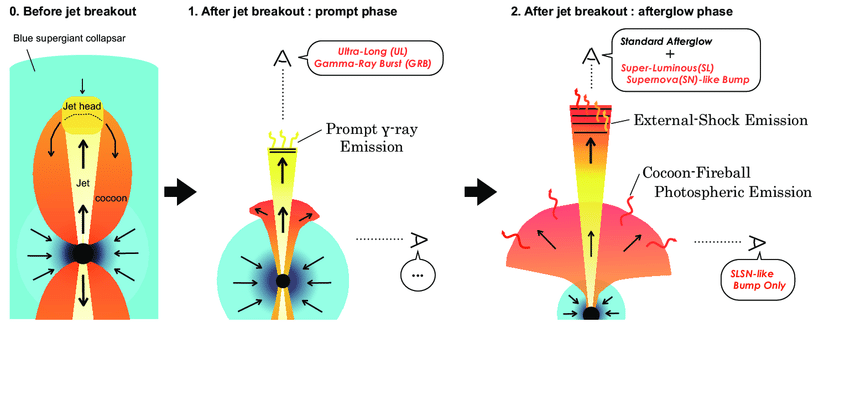
The problem with the idea of J1533+2727 being an LGRB is the amount of energy produced. Ravi’s team find that it’s energy output is more than what could be produced by a star undergoing a core collapse supernova.
Additionally, J1533+2727 is located at a distance from the center of it’s host galaxy where one does not expect to find LGRBs. Also, most LGRBs are found in galaxies undergoing high rates of star formation. This is not the case with SDSS J153350.89+272729.
A black hole tearing a star to pieces
According to Ravi’s team, the only explanation that could best fit the behavior of J1533+2727 is a tidal disruption event. A tidal disruption event occurs when objects get too close to a massive object. They are then torn apart by the massive object’s gravity. The massive object is often a black hole as they produce immense gravity close to them.
The material then forms an accretion disk around the black hole as it spirals in. This creates strong magnetic fields which focus some of the in-falling material into jets. These jets travel outward near the speed of light until they collide with the interstellar medium to create radio waves.
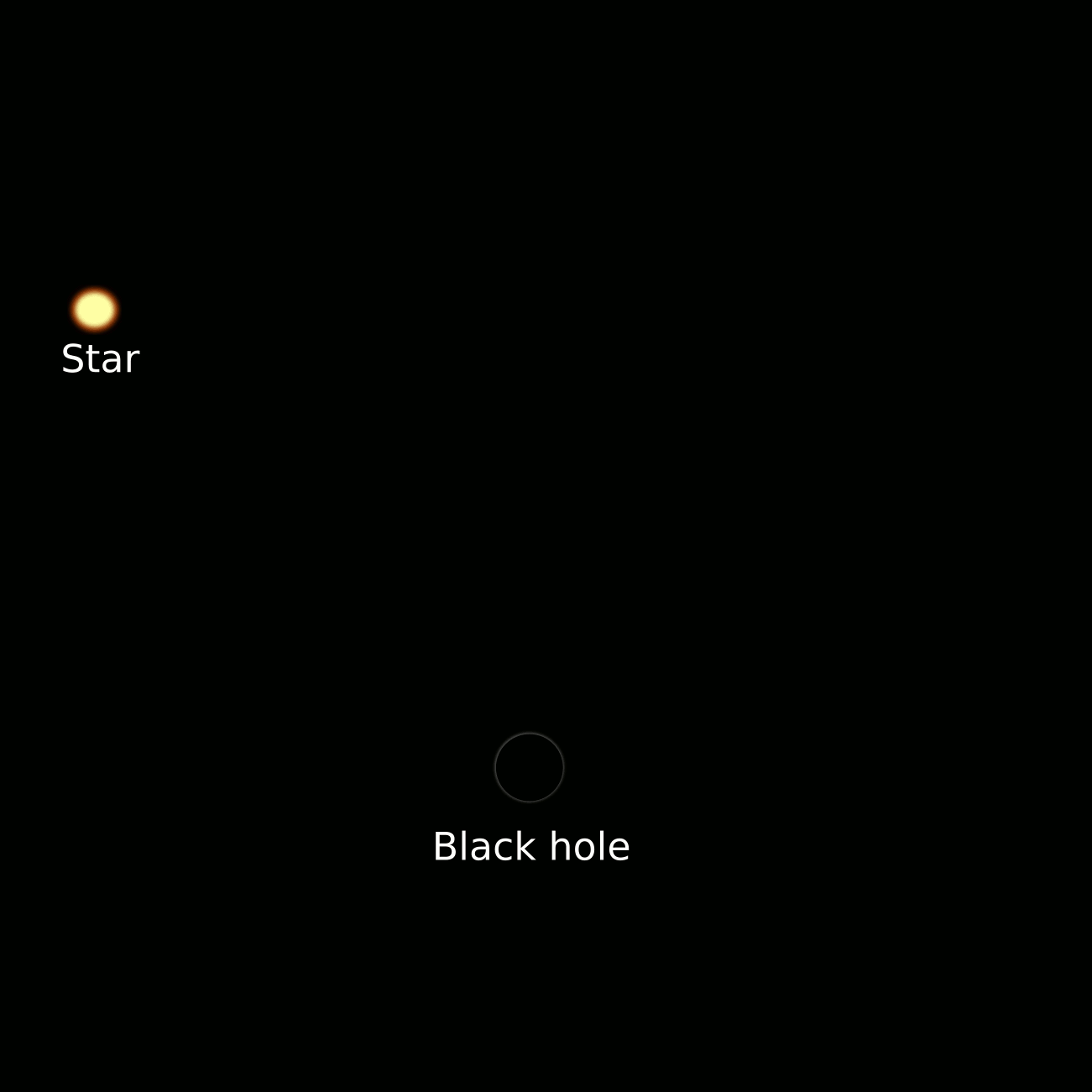
As the material in the accretion disk drains away into the black hole, the jets become weaker. The radio emission caused by the jets hitting the interstellar medium slowly fades from the view of telescopes. Hence this explains the continuous decrease in brightness observed in the decades since it’s first observation.
Another line of evidence supporting the idea that J1533+2727 is a tidal disruption event is the fact that it’s brightness appears to change in the same way other tidal disruption events do.
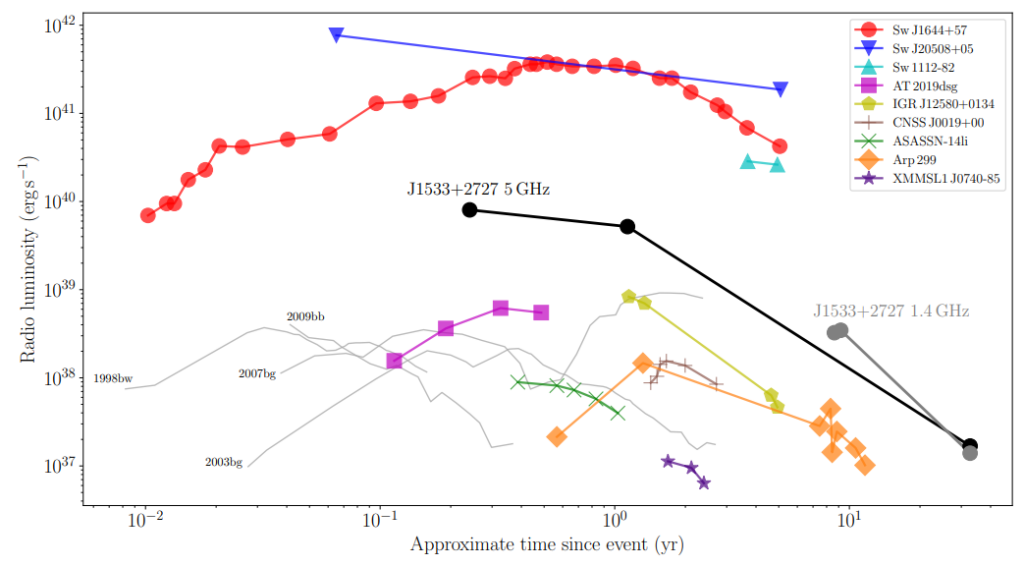
Conclusion
This discovery is a reminder of how destructive black holes and other massive objects can be. It also reminds us how the events we see in space make everything here on earth look very tame.